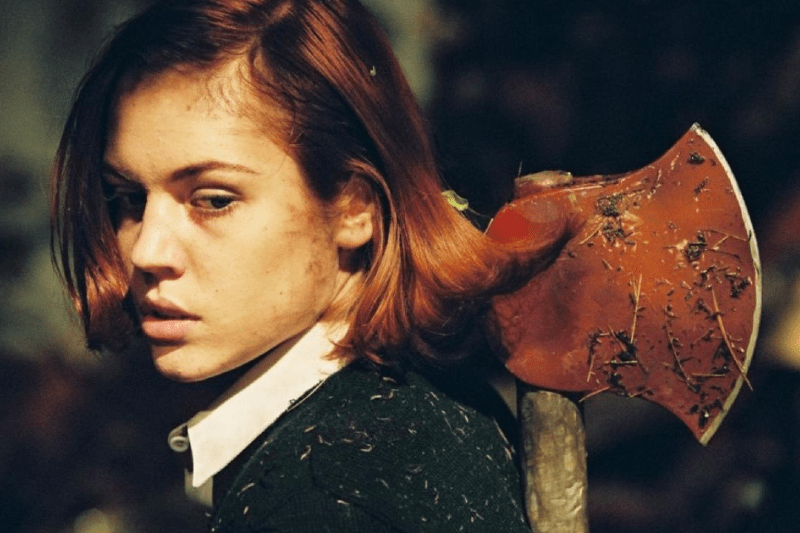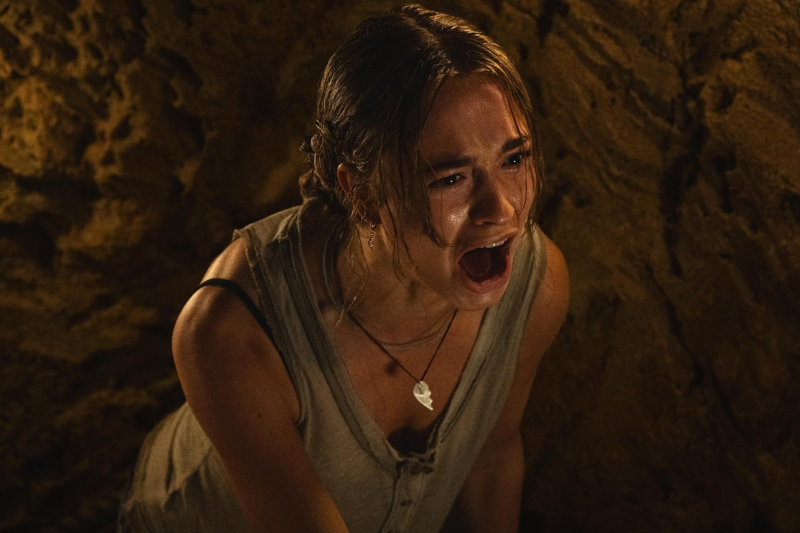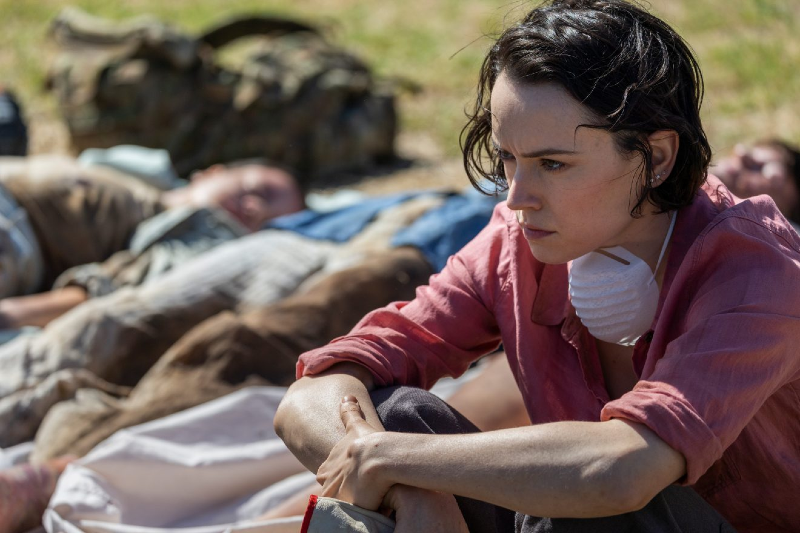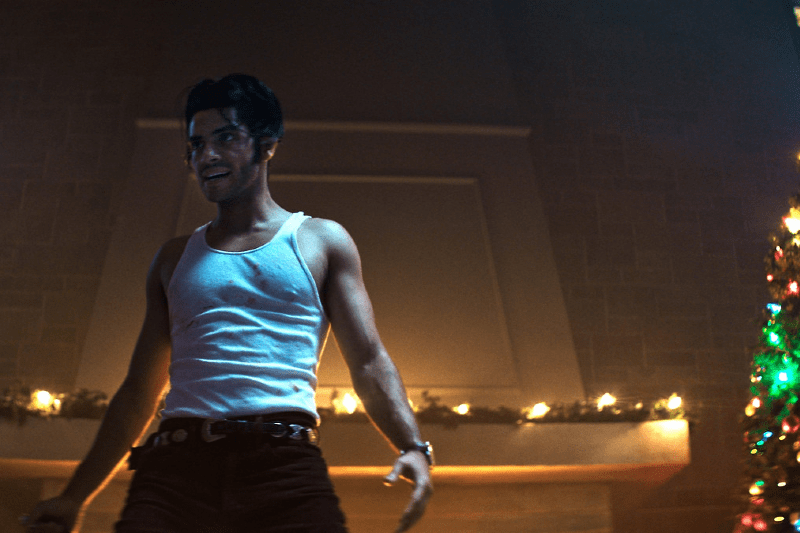At first glance, Lucky McKee’s The Woods is your standard folklore narrative. A young girl is thrust into an old-world mystery, facing supernatural forces that blur the line between reality and myth. But what The Woods brings to the table is a fresh perspective that revives age-old myths for a modern audience, making the old seem intriguing and new.
Set in 1965, The Woods follows Heather (Agnes Bruckner), a troubled teenager sent to all-girls boarding school Falburn Academy under the watchful eye of Ms. Traverse (Patricia Clarkson). But when Heather begins experiencing nightmares and hearing voices from the surrounding woods, she sets out to uncover the school’s dark history. As students disappear one by one, Heather uncovers the truth about Falburn: the school is home to a coven of witches.
Intrigued by Heather's strength and defiance, Ms. Traverse holds one-on-one classes to test Heather's endurance and obedience. In these sessions, Heather is forced to complete bizarre rituals designed to break her will, including drinking milk laced with a substance that clouds her judgement. Through these manipulative rituals, the witches bend Heather’s will to their own, eroding her sense of self and pushing her to the brink of exhaustion.
As the rituals grow more intense, Heather soon realizes she's the key to the witches' plan. Her resilience makes her the perfect candidate for a ritual to increase the coven's power and secure their immortality. Determined not to fall victim to their ritual, Heather battles through the psychological torment to expose the witches’ plan and break their hold over the academy. By turning the coven’s magic against them, Heather reclaims her identity and frees the other girls from their sinister influence.
On the surface, The Woods follows a similar premise as other films in the subgenre, most notably Dario Argento’s Suspiria. However, while films in the folklore subgenre typically immerse themselves in traditional depictions, The Woods explores pagan practices against the backdrop of psychological manipulation.
Witchcraft is often depicted through a classic coven structure steeped in ancient lore. Suspiria is deeply rooted in the myth of the Three Mothers: powerful, ancient witches who embody sorrow, tears, and darkness. The idea is drawn from Thomas De Quincey, an 18th-century essayist. He proposed that, just as there are three graces and three fates, there should also be three sorrows who would bring death wherever they go.
Dario Argento expanded on De Quincey’s concept to create a detailed and sinister mythology for the film. Similarly, more recent folklores such as Hereditary feature ritualistic practices that align with historical witchcraft and occultism. The film’s central plot revolves around the summoning of Paimon, a demon from historical grimoires. This figure is based on actual occult lore, where Paimon is described as one of the Kings of Hell and sought after for his supposed powers.
While The Woods does integrate some historical and cultural references, its approach is more elusive than the traditional depictions of witchcraft. Instead, it reinterprets traditional mythology, focusing less on dark arts and more on the psychological manipulation exerted by the witches.
Sacrificial rituals are a staple in the subgenre. From The Wicker Man’s shocking finale to Suspiria’s ritualistic murders, these acts are central to the horror of folklore cinema. Typically, these practices involve dramatic, ceremonial acts meant to appease or summon supernatural entities. The Wicker Man’s climactic scene sees Sergeant Howie (Edward Woodward) burned alive in a wicker figure. In Suspiria, the ritual scenes are depicted as macabre ceremonies with a focus on the physical suffering of the victims.
But in The Woods, the concept of sacrifice takes a more personal approach. The film's climax revolves around forsaking one's identity and autonomy over life itself. Heather's final confrontation with the witches isn't about preventing a physical sacrifice. Instead, it’s about reclaiming her mind and sense of self from the psychological torture inflicted on her.
Set against the backdrop of a post-World War II society, The Woods subtly draws on the cultural fears surrounding witchcraft during that time. Witchcraft in this era symbolized resistance and the anti-establishment movement. And, although this wasn’t the first wave of witchcraft, it coincided with a period when music was profoundly influential in shaping countercultural movements. In the film, Heather repeatedly listens to Leslie Gore’s “You Don’t Own Me,” an anthem for women’s freedom. The song's cultural relevance lies in its message of freedom and self-determination, aligning with the film's theme of personal and psychological struggles against oppressive forces. This underscores Heather's journey toward reclaiming her identity and autonomy, mirroring the broader socio-cultural battles of the time.
The 60s was a decade marked by significant social upheaval. And as traditional norms were challenged, nature became a potent symbol of freedom and truth. For many, nature represented a space free from societal pressures and artificial constructs. The natural world was seen as a place where individuals could reconnect with a truer self, unbound by the expectations and restrictions of normal life.
In The Woods, the forest reflects Heather’s internal struggles and desires for freedom. Feeling isolated and driven by curiosity and desperation, she explores the surrounding woods to escape from the oppressive environment of the academy. As she navigates the forest, she encounters supernatural phenomena, such as distorted trees and strange symbols. These encounters symbolize her confrontation with hidden truths and the breaking down of her old identity. The forest becomes a space where societal norms are suspended, and Heather is forced to confront the darker aspects of her own psyche.
In many folklore horror films, symbols and rituals serve as direct manifestations of the conflict between the protagonists and the forces against them. The transformations characters undergo are often tied to these rituals and sacrifices, reflecting the overarching mythological framework of the story. In more traditional narratives, such as The Ritual, symbols are connected to Norse mythology and folklore. These symbols actively contribute to the supernatural threats, acting as physical manifestations of the ancient deities. In The Ritual, the runic carvings are not passive elements but active components that invoke the forest’s dark power.
In The Woods, the approach to symbols and rituals is notably different. While the film doesn’t explicitly reference Norse mythology, it does subtly incorporate elements that echo symbols found in Norse myths.
In Norse mythology, Yggdrasil is the central World Tree that connects the nine worlds. It symbolizes the interconnection of all life and the cosmos. In The Woods, the forest can be seen as a parallel to Yggdrasil, acting as a central force that encompasses Heather’s journey. Similarly, liminal spaces in mythology are transitional zones where characters confront deeper truths or undergo transformations.
In Norse mythology, places like Jotunheim (the land of giants) are often portrayed as challenging, otherworldly realms. The forest in The Woods functions as a liminal space where Heather experiences profound psychological and emotional shifts. This aligns with the Norse idea of otherworldly realms being sites of significant transformation and revelation. The forest represents a boundary between the ordinary world and the deeper, darker truths Heather must confront.
Unlike the direct supernatural effects of symbols in Norse mythology, the pagan symbols in The Woods play a more sinister role. The symbols, such as the distorted trees and strange markings, represent Heather’s internal struggle rather than being the direct cause of supernatural threats. The witches use these symbols to create a sense of isolation, fear, and confusion within Heather, serving as psychological triggers rather than physical ones. The twisted, unnatural shapes of the trees mirror her own feelings of confusion, fear, and alienation. And the circular patterns found in the forest and within the academy represent the recurring nature of control and entrapment that Heather experiences throughout the film.
While The Woods incorporates traditional themes of folklore, including pagan symbols and witchcraft, it successfully shifts the focus from external supernatural threats to internal psychological manipulation. Unlike other films in the subgenre that emphasize physical manifestations of dark magic, The Woods offers a more introspective take on folklore horror. This approach sets it apart, presenting a fresh perspective on the genre that lingers long after the final scene.







